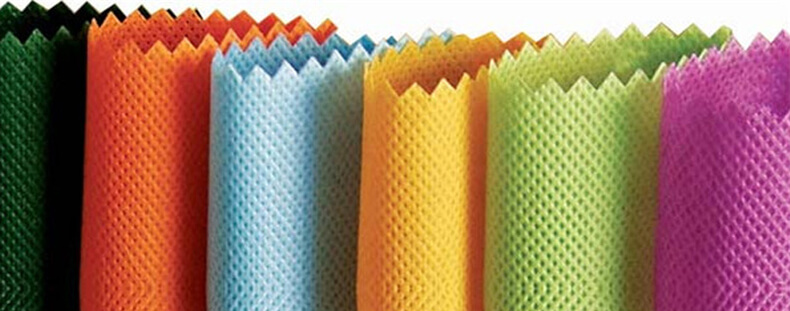


Non-woven materials are not really fabrics though they give us a feel of being fabrics. There is no interlacing of yarn for internal cohesion as in a woven fabric. In fact, there is organized internal structure in a nonwoven fabric. We have been using these products for quite some time now without knowing about them. It is said that Saint Christopher and Saint Clement placed wool in their sandals to prevent blisters while fleeing to escape persecution and at the end of their journey, this wool turned into woolen socks for them. This is the basic principle of formation of nonwoven fabrics and felt is one of the most common examples of such fabrics. Nonwoven fabrics are made by placing together several fibers and pressing them using heat and pressure to create a fabric. Sometimes adhesive is also used to convert fibers into nonwoven fabrics.
Contemporary non-woven fabric dates to the early1930s. At that time, a few textile companies began experimenting with bonded materials as a way of utilizing cotton waste. The first commercial production of the products now called non-wovens began in 1942 in the United States in an effort to produce fabric directly from fibres. The market for non-woven products has experienced tremendous growth and has potential for more.
Nonwovens may be classified as either disposable or durable goods. Disposable or non durable, nonwovens include such one-time use products as diapers, medical dressings, household wipes, and disposable protective clothing. Durable goods are used for apparel interfacing, automobile headliners, road underlayment, and carpets.
Nonwoven fabrics are broadly defined as sheet or web structures bonded together by entangling fiber or filaments (and by perforating films) mechanically, thermally or chemically. They are flat or tufted porous sheets that are made directly from separate fibers, molten plastic or plastic film. They are not made by weaving or knitting and do not require converting the fibers to yarn. Typically, a certain percentage of recycled fabrics and oil-based materials are used in nonwoven fabrics. The percentage of recycled fabrics vary based upon the strength of material needed for the specific use. In addition, some nonwoven fabrics can be recycled after use, given the proper treatment and facilities. For this reason, some consider nonwovens a more ecological fabric for certain applications, especially in fields and industries where disposable or single use products are important, such as hospitals, schools, nursing homes and luxury accommodations.
Nonwoven fabrics are engineered fabrics that may have a limited life, single-use fabric or a very durable fabric. Nonwoven fabrics provide specific functions such as absorbency, liquid repellence, resilience, stretch, softness, strength, flame retardancy, washability, cushioning, thermal insulation, acoustic insulation, filtration, use as a bacterial barrier and sterility. These properties are often combined to create fabrics suited for specific jobs, while achieving a good balance between product use-life and cost. They can mimic the appearance, texture and strength of a woven fabric and can be as bulky as the thickest paddings. In combination with other materials they provide a spectrum of products with diverse properties, and are used alone or as components of apparel, home furnishings, health care, engineering, industrial and consumer goods.
The particular set of properties that a non-woven fabric may have is dependent upon the combination of factors in its production. The range of characteristics is wide.